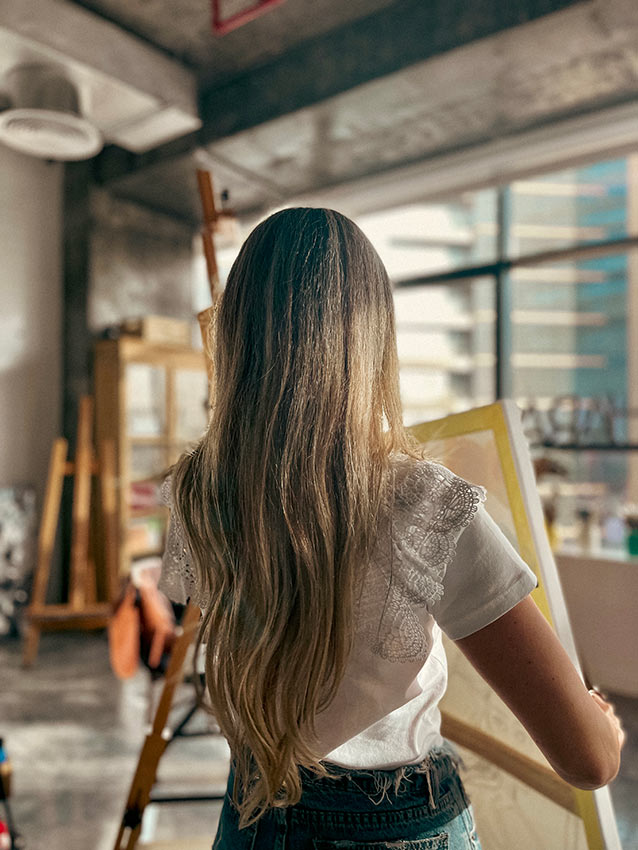Art education is a critical component of early childhood development, offering much more than just an opportunity for self-expression. It plays a vital role in shaping a child’s cognitive, emotional, and social skills. As we delve into this topic, we’ll explore why art is essential from an early age, examining its benefits and the ways it contributes to a child’s overall growth.
Art education encompasses a range of activities and experiences designed to teach children about various forms of artistic expression. It includes activities such as drawing, painting, sculpting, and engaging with different media. The aim is not only to develop artistic skills but also to foster a deeper understanding of the world through visual and creative exploration.
Benefits of Early Art Learning
One of the most significant benefits of early art education is its impact on the creative process. Art encourages children to think imaginatively and explore their ideas. By engaging in artistic activities, children learn to experiment with different materials and techniques, which helps them develop problem-solving skills and innovative thinking. This process nurtures their ability to approach challenges from various perspectives and enhances their cognitive flexibility.
Art learning plays a crucial role in supporting visual learning. Children who engage in artistic activities develop better visual discrimination skills, which are essential for understanding and interpreting visual information. This skill set is not only beneficial for art but also supports academic success in subjects like math and science. By learning to observe, analyze, and represent visual elements, children improve their ability to grasp abstract concepts and make connections between ideas.
Children Art Education provides them with an opportunity to explore and appreciate different cultures. Exposure to various artistic traditions and styles helps children gain a broader understanding of cultural diversity. Learning about art from different parts of the world fosters empathy and respect for others, enriching their cultural awareness. This appreciation for diversity contributes to a more inclusive and harmonious society.
4. Encouraging Art Exploration
Early exposure to art encourages children to explore their artistic interests and talents. Art exploration allows children to experiment with different techniques, mediums, and styles, helping them discover their unique artistic voice. This exploration not only enhances their artistic skills but also boosts their confidence and self-esteem. Encouraging children to explore their creativity helps them find joy in the process of creating and expressing themselves.
How Art tutoring Influences Development
1. Cognitive Development
Art tutoring supports cognitive development by enhancing problem-solving skills, critical thinking, and the ability to make connections between different concepts. Engaging in artistic activities stimulates the brain and promotes neural connections that support overall cognitive growth. It encourages children to think creatively and approach problems from different angles, fostering innovation and originality.
2. Emotional Development
Art provides a valuable outlet for children to express their emotions and experiences. Through artistic expression, children can explore their feelings, build self-awareness, and develop emotional resilience. Art learning helps children process their emotions and communicate them effectively, contributing to their emotional well-being. The ability to express emotions through art provides a sense of relief and satisfaction.
3. Social Development
Participating in art activities often involves collaboration and interaction with peers. This social aspect of art tutoring helps children develop teamwork skills, appreciate different perspectives, and build positive relationships. Working on group projects or sharing their artwork with others fosters a sense of community and mutual respect. Social interactions during art activities contribute to the development of communication and interpersonal skills.
Integrating Art Learning into Daily Life
1. Creating a Supportive Environment
To maximize the benefits of art learning, it’s essential to create a supportive environment that encourages creativity and exploration. Provide children with a variety of art materials, such as paints, brushes, and drawing tools, and create a dedicated space for artistic activities. Encourage experimentation and celebrate their artistic achievements, fostering a positive attitude towards art. A supportive environment helps children feel motivated and excited about engaging in artistic endeavors.
2. Incorporating Art into Everyday Activities
Integrate art into daily life to reinforce its importance and make it a natural part of a child’s routine. Engage in art-related activities such as visiting museums, attending art workshops, or exploring local art events. Encourage children to observe their surroundings and use their creativity to interpret and represent what they see. Incorporating art into everyday activities helps children develop a deeper appreciation for the art of creating and nurtures their artistic interests.
3. Supporting Art Learning in Schools
Advocate for the inclusion of art learning in school curricula and support programs that offer comprehensive art instruction. Collaboration between educators, parents, and communities can help ensure that art learning remains a priority and that children have access to high-quality art programs. Supporting art education in schools contributes to the overall development of students and enriches their learning experiences.
Conclusion
Art education at an early age is essential for fostering creativity, supporting cognitive and emotional development, and enhancing cultural perception. By integrating art into daily life and advocating for its inclusion in educational settings, we can provide children with valuable opportunities to explore their creative potential and develop essential skills for their future. It not only enriches children’s lives but also contributes to a more vibrant and culturally aware society.
Recognizing the significance of art learning and actively supporting its integration into early childhood development helps shape a generation of creative, empathetic, and culturally informed individuals. Its benefits extend beyond the realm of art, influencing various aspects of a child’s growth and development.
Shop my artwork collection.
Check my digital artwork collection.


